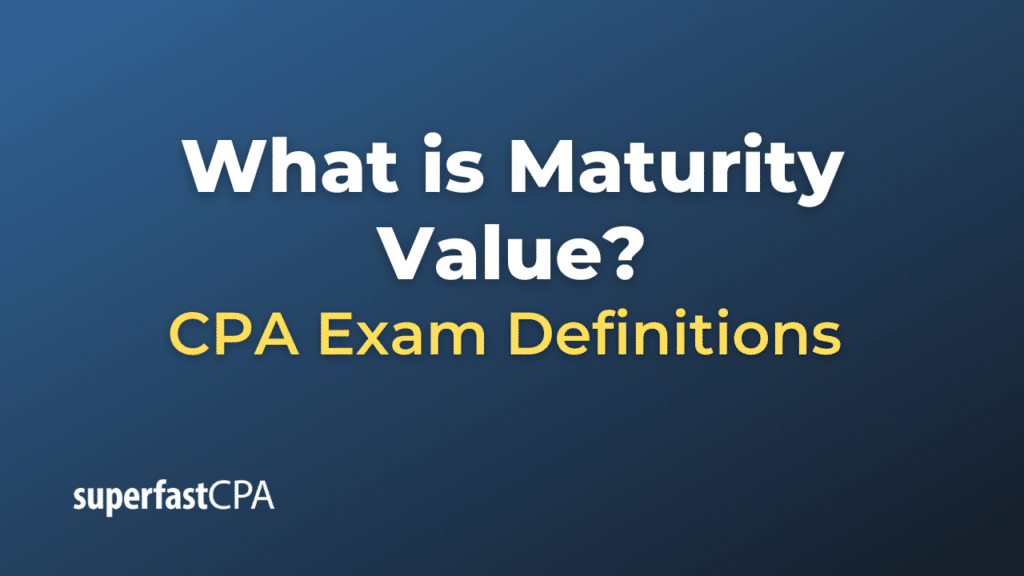Maturity Value
The maturity value, or face value, of a financial instrument is the amount of money that is due to be received by the holder of the instrument at the end of the instrument’s term. It represents the total amount the issuer of the instrument owes to the lender or investor at maturity.
For a bond, the maturity value is the principal amount the bond issuer must pay to the bondholder when the bond matures. For example, if a company issues a 10-year bond with a face value of $1,000, the maturity value of that bond is $1,000. This is the amount the company must repay the bondholder at the end of the 10-year period.
For a fixed deposit or a certificate of deposit, the maturity value is the amount the depositor will receive from the bank at the end of the deposit term, which includes both the original principal amount deposited and the accumulated interest.
The maturity value is a crucial factor in investment decisions as it allows investors to understand how much they stand to receive at the end of an investment’s term. It also aids in comparing the potential returns from different investments.
Example of Maturity Value
Let’s take a look at an example using a certificate of deposit (CD):
Suppose you invest $5,000 in a 3-year CD that has an annual interest rate of 2%, compounded annually.
The formula to calculate the maturity value is:
Maturity Value = Principal * (1 + Interest Rate/Number of Compounding Periods)^(Number of Compounding Periods * Number of Years)
In this case, since the interest is compounded annually (meaning there’s one compounding period per year), the formula simplifies to:
Maturity Value = Principal * (1 + Interest Rate)^Number of Years
Applying the numbers from the example:
Maturity Value = $5,000 * (1 + 0.02)^3
= $5,000 * 1.0612
= $5,306
So, the maturity value of the CD after 3 years is $5,306. This amount includes both the original principal ($5,000) and the interest earned over 3 years ($306). At the end of the 3-year term, you would receive $5,306 from the bank.
The maturity value in this example shows the total amount an investor would get back at the end of the investment period, which is crucial for understanding the potential return of an investment.













